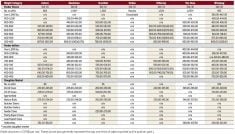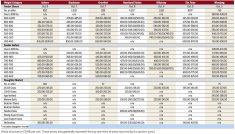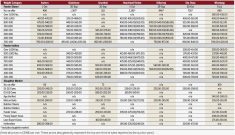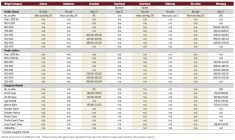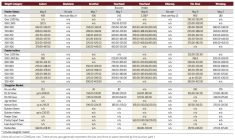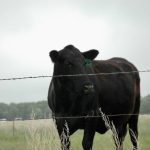* CME live cattle mixed in choppy trading
* Fund selling drops feeder cattle futures
By Theopolis Waters
CHICAGO, Sept 6 (Reuters) - Chicago Mercantile Exchange hog
futures rose for a sixth straight session on Friday, led
by fund buying that prompted short-covering, traders and
analysts said.
October futures' discount to CME's hog index, which was at
91.45 cents, encouraged buying and bullish spreads.
CME hogs closed up 3.6 percent for the week.
October ended 1.500 cents higher at 90.900 cents per
lb and hit a new contract high of 91.025 cents. December
ended up 1.075 cents to 87.000 cents.
Read Also

Manitoba cattle prices, Oct. 17
The possibility that spread of the Porcine Epidemic Diarrhea
virus (PEDv), which is fatal to baby pigs, will reduce hog
supplies later this year generated October and December futures
buying.
"A lot of baby pigs that have died from that (PEDv) would
have gone to slaughter in the fourth quarter, which is helping
boost fourth-quarter futures," University of Missouri livestock
economist Ron Plain said.
Others contend that the virus's impact will be minimal and
may have been factored into the market already.
Futures climbed despite packers lowering cash hog bids as
wholesale pork demand wanes.
Processors may trim production next week to preserve
operating margins. The move could offset a brief reduction in
hog supplies after a recent bout of hot weather slowed animal
weight gains.
The U.S. Department of Agriculture on Friday morning
reported the average hog price in the most watched
Iowa/Minnesota market at $68.33 per hundredweight (cwt), $1.34
lower than on Thursday.
Friday morning's U.S. government data showed the wholesale
pork price, or cutout, at $94.94 per cwt, down 56 from Thursday.
The cutout was largely weighed down by the $5.06 price drop
for loins, which are cut into pork chops and which are popular
at backyard barbecues.
Wholesale pork and beef prices tend to lag after the U.S.
Labor Day holiday, the unofficial end of the summer grilling
season.
Funds that trade CME hogs and live cattle periodically sold
October futures and bought deferred months. They moved October
long positions mainly into December prior to similar moves next
week by followers of the Goldman Sachs Commodity Index
(S&PGSCI).
That shifting will be for five days beginning Sept. 9.
MIXED, CHOPPY LIVE CATTLE TRADE
CME live cattle settled mixed after a volatile session.
For the week, CME live cattle gained 2.4 percent.
October closed up 0.450 cent per lb at 125.675
cents, while December ended down 0.100 cent at 129.025
cents.
Sentiment that cash cattle prices have forged a near-term
bottom stirred CME live cattle October buyers, traders said.
Cash cattle traded lightly in Texas and Kansas at $123 per
cwt, steady with last week, feedlot sources said. Initial
live-basis cattle sales in Nebraska were at $122, down $2 from a
week ago, they said.
Packers held cash prices steady despite ample supplies of
contracted cattle and waning wholesale beef demand.
The USDA on Friday morning showed the wholesale choice beef
price at $195.23 per cwt, down 63 cents from Thursday. Select
cuts dropped 73 cents to $181.18.
The belief that futures are over-valued based on cash cattle
price expectations weighed on deferred live cattle months.
"Everyone is optimistic about the cash, but the board
(futures) is carrying that premium," CattleHedging.com analyst
Elaine Johnson said.
CME feeder cattle fell on fund selling and firm corn prices
that may curb feedlot demand for young cattle.
Feeder cattle futures ended down marginally for the
week, snapping a seven-week win streak.
September closed at 156.375 cents, down 0.375 cent,
while October ended 0.875 cent lower at 157.925 cents.
(Editing by Peter Galloway)
LIVESTOCK-Fund buying extends U.S. hog futures advances
By



